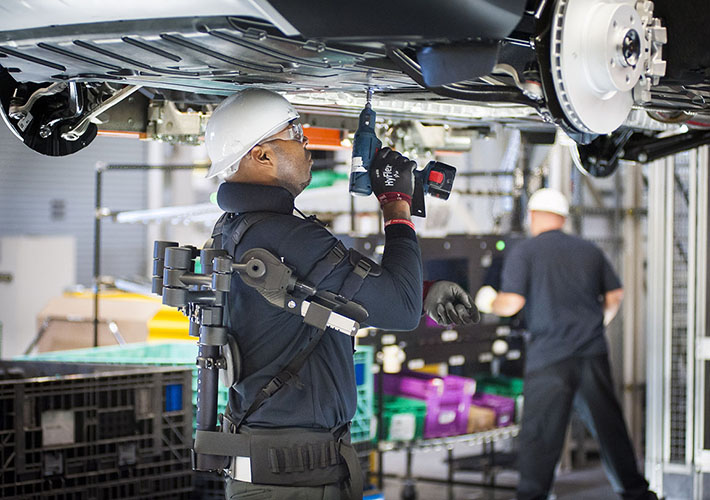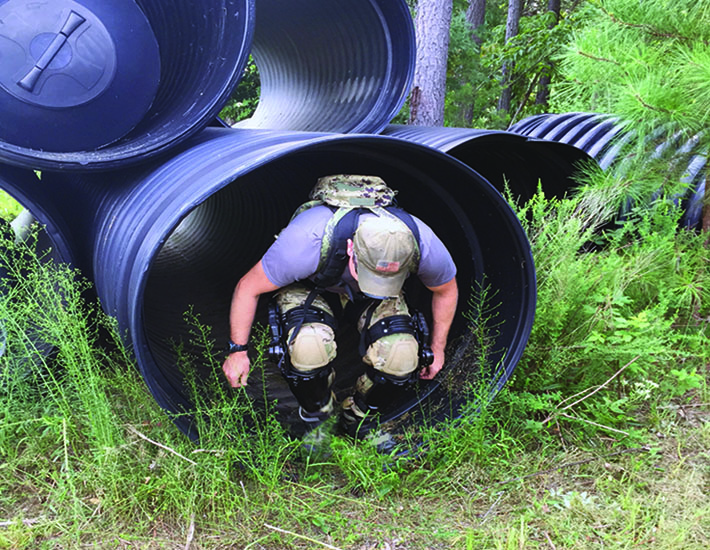
The Future of Exoskeleton Standards
When people hear the word “exoskeleton,” they often picture one thing: Iron Man.
After all, Robert Downey Jr.’s character in the Marvel film franchise - along with decades’ worth of comic books - is one of the best-known depictions of exoskeleton technology in popular culture. In that case, the exoskeleton serves as a multifunctional tool, containing rockets, armor, and a built-in energy source the hero uses to take flight and defend himself.
But the fact is, exoskeletons – as they exist in the real world – can do so much more. First developed by the U.S. military in the 1960s, today’s exoskeletons support manufacturing, construction, healthcare, and more. As a result, workers are becoming more productive, patients are healthier, and new applications for “exo technologies” are surfacing every day.
FOR YOU: The Promise of Exoskeletons
The industry has evolved to the point that, in 2017, ASTM International launched the committee on exoskeletons and exosuits (F48) to develop standards for these new technologies, addressing safety, quality, performance, ergonomics, and terminology for systems and components.
“Around 2006 things took off, leveraging all the recent advances in computing, robotics, materials, and more,” explains Dr. William Billotte, vice-chairman of the committee and an official with the U.S. National Institute of Standards and Technology. “That’s when all of the science fiction really became a reality.”
Since then, the market for exoskeleton technology has grown rapidly, and today, there are more than 80 companies around the world working with exoskeletons. They’ve grown beyond their military roots as well, with much more work being done to promote their use in industry and medical applications, where the potential markets are much larger.
“Early on, the focus was of course to build a real Iron Man and allow people to gain superhuman powers,” Billotte says. “But researchers pretty quickly came to realize that this technology is actually a lot better at reducing and preventing injuries than it is at creating superheroes.”
Today, companies like Ford, Boeing, and BMW are integrating exoskeletons into their workforces for things like overhead work and other repetitive tasks, helping to reduce injuries to their workers. That’s the growth segment of the market, helping people do their jobs in a safer, better way to ensure the quality and reliability of their work product.

Military applications formed one of the first areas for exoskeleton development.
With this backdrop, the committee has been hard at work. Already, they’ve created two standards with five more in development (see below).
“The main focus for us as a committee is to educate people and give them confidence when using these types of exoskeletons,” Billotte says. “What they are good for, where you should use them, how to use them safely, et cetera. We’re really just getting started, but these standards are a good first step.”
In addition, ASTM International just announced a call for proposals for a major new “Exo Technologies Center of Excellence,” with potential funding of up to $1.25 million. Read more here.
Published: Standard Terminology for Exoskeletons and Exosuits (F3323-19)
The committee’s first standard provides a common and consistent lexicon for manufacturers and users of exoskeletons so that all involved in research, design, deployment, and use of these technologies can communicate about them effectively. As with other emerging technologies, the committee’s goal was simply to standardize the wording and language around these tools and their associated parts and applications, drawing from other related fields when possible.
Published: Standard Practice for Labeling and Information for Exoskeletons (F3358-18)
Standardized labeling helps ensure that the basic information needed to select and use exoskeletons is included on any parts and products. The standard addresses how and where tags can be affixed to exoskeletons, what safety information needs to be included, what warnings are required, and what other warranty and user information needs to be present. This standard is designed to inform manufacturers about what they need to label for the end user.
In Development: Utilization of Digital Human Modeling (WK65347)
This draft standard aims to identify and develop methods for using digital human modeling tools to understand the physiological and biomechanical effects of exoskeleton/exosuit usage on the body for static and dynamic movements and/or work activities. The proposed standard addresses how more advanced, lifelike exoskeletons will be developed in the future.
In Development: Safety Considerations in Designing and Selecting Exoskeletons for Industrial, Medical and Military Applications (WK65346)
As exoskeletons enter more common usage, safety will become an even greater priority. This standard aims to outline what manufacturers need to do to develop and build safe products. The standard aims to help identify potential malfunctions and to flag higher risk situations that could be caused by using an exoskeleton in a particular environment.
In Development: Load Handling When Using an Exoskeleton (WK65295)
This effort addresses a basic use of exoskeletons: handling loads in real-world scenarios. In order to ensure that an exoskeleton technology is as safe as possible, the standard will outline test methods for manufacturers as well as language for user instructions around how to safely use an exoskeleton for load handling.
In Development: Assessing System Training (WK65587)
This proposed standard will address best practices for exoskeleton user training, including processes and procedures for hands-on training, documentation, record keeping, recalls, warranty issues, certifications, and more.
In Development: Recording Environmental Conditions for Utilization with Exoskeleton Test Methods (WK65296)
It can be difficult for testing to accurately replicate the real-world conditions in which an exoskeleton will be used, including variables like ground surface, air quality, humidity, electrical interference, lighting, temperature, and more. To address this, this standard aims to outline procedures and record-keeping requirements to match up manufacturer testing conditions with those that users are likely to encounter during regular use.
Billotte is proud of the work the committee has done so far and is excited about the future. “The main focus for us as a committee is to educate people and give them confidence when using these types of exoskeletons,” he says. “What they are good for, where you should use them, how to use them safely, et cetera. We’re really just getting started, but these standards are a good first step.”
Tim Sprinkle is a freelance writer based in Colorado Springs, Colorado. He has written for Yahoo, The Street, and other websites.
READ MORE: The Promise of Exoskeletons
 SN Home
SN Home Archive
Archive Advertisers
Advertisers Masthead
Masthead RateCard
RateCard Subscribe
Subscribe Email Editor
Email Editor